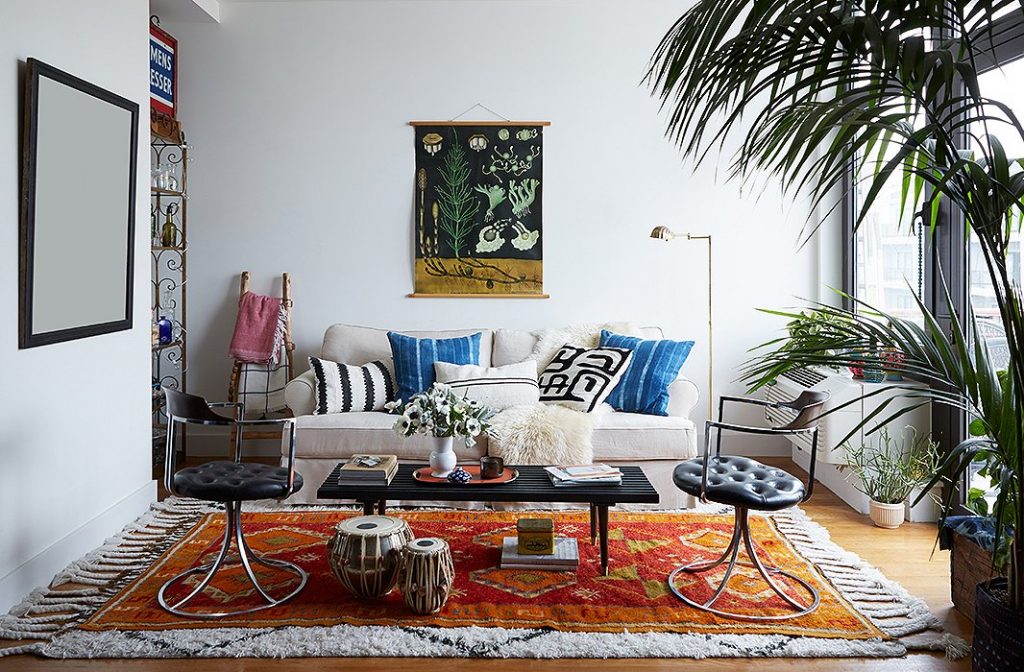
The art of layering textures in interior spaces is key to creating captivating and multi-sensory environments. Have you ever walked into a room and felt instantly at ease, surrounded by a sense of warmth and comfort? Or conversely, felt overwhelmed by a space that felt stark and cold? This often comes down to the masterful, or perhaps clumsy, use of texture. Many homeowners struggle to achieve that perfect balance of visual and tactile interest. They may understand the importance of color and furniture placement, but often overlook the power of texture. This thorough guide will explore the art of layering textures in interior spaces, providing you with practical advice and inspiration to transform your home into a haven of comfort and style. We’ll cover varied types of textures, effective layering techniques, and practical tips to make your space unique and inviting. Get ready to unlock the secret to creating truly stunning interiors.
Understanding Texture in Interior Design
The Basics of Texture
Texture plays a crucial function in interior design, adding depth, visual interest, and a tactile dimension to a space. It refers to the surface quality of materials, how they feel to the touch, and how they appear visually. From the rough weave of a wool rug to the smooth sheen of a marble countertop, textures evoke varied sensations and emotions, impacting the overall mood and atmosphere of a room. Understanding the interplay of textures is essential for creating a well-designed and harmonious interior.
Types of Textures
There are broadly two main classifications of textures; natural and man made. Natural textures offer a sense of authenticity and connection to nature, including materials like wood, stone, leather, and wool. Man-made textures offer an array of options, from the smooth surface of painted walls to the intricate patterns of woven fabrics, offering a wide variety of visual and tactile experiences. Combining natural and man-made textures often creates a unique and sophisticated blend.
The Importance of Texture in Interior Design
Incorporating various textures creates visual interest and avoids monotony. A room filled with only smooth surfaces can feel cold and impersonal, whereas a room with a mix of textures is more welcoming and engaging. Texture also influences the perception of space. Rough textures can make a room feel cozier, while smooth textures can create a sense of spaciousness. Mastering texture allows for greater control over the mood and functionality of a space.
Layering Techniques for Interior Spaces
Combining varied Textures
Layering textures involves combining varied textures to create depth and visual complexity. This might involve pairing rough and smooth surfaces, or contrasting hard and soft textures. For instance, a chunky knit throw draped over a smooth leather sofa introduces textural contrast, adding visual interest and warmth. Think about combining soft velvet cushions with the hard lines of a wooden coffee table. The juxtaposition creates balance and dynamism.
Creating Textural Contrast
The strategic use of textural contrast is vital in interior design. Contrasting textures such as smooth glass against rough woven fabric creates an intriguing dynamic. This contrasting effect draws the eye and creates focal points within the room. Consider the contrast between a polished marble floor and a shaggy rug – the differences create visual energy and intrigue. The contrast should however remain balanced to avoid overwhelming the sense of space.
Repetition and Rhythm in Texture
While contrast is crucial, repetition and rhythm in texture can bring harmony and a sense of calm. Repeating a texture, such as using the same wood throughout a room, creates a sense of unity. Repeating subtle textures, like the subtle grain of a particular wood, establishes a rhythmic pattern that brings balance to the room. This repetitive use also creates a calming effect. Think of using the same fabric in curtains and cushions.
Practical Tips for Layering Textures
Starting with a Neutral Base
Beginning with a neutral base is essential for achieving a balanced and harmonious effect. Neutral colors and simple textures offer a backdrop for layering richer textures. A plain painted wall or a light-colored carpet can be excellent neutral starting points. Then add other richer textures on top of these neutral base layers.
Using the Rule of Three
The ‘rule of three’ is a useful instruction when layering textures. This rule recommends selecting three varied types of textures for a harmonious combination; for instance, a smooth, a rough, and a medium texture. This combination prevents the space from feeling monotonous while maintaining an effective balance. Using this principle as a starting point allows for both experimentation and refinement.
Considering Scale and Proportion
The scale and proportion of your textures are also critical. Large-scale textures like a large area rug can anchor a room, while smaller-scale textures like patterned cushions add subtle accents. Maintaining a balance between these scales is essential for an overall sense of harmony. Too many large scale textures can overwhelm a smaller room, whilst too many small scale textures can look lost in a larger room.
Examples of Layering Textures in varied Rooms
Living Room Layering
A living room is an excellent space to showcase your textural skills. Imagine combining the smooth leather of a sofa with the rough texture of a chunky knit throw and the soft pile of a wool rug. This combination offers a variety of textures, each contributing to the room’s overall comfort and style. You might also consider a coffee table made of reclaimed wood to add a natural texture to the mix.
Bedroom Texture Layering
In the bedroom, prioritize softness and comfort. Combining the smooth linen of bedding with the textured weave of a wool blanket creates a warm and inviting atmosphere. A bedside lamp with a textured base adds a subtle touch of visual interest without overwhelming the space. A plush rug adds extra textural depth and comfort.
Kitchen and Dining Room Textural Layering
In the kitchen and dining room, it is crucial to consider durability and practicality. Consider combining the smooth surface of stone countertops with the warm texture of wooden chairs. A woven placemat adds a subtle touch of texture under plates, completing the textural balance.
Beyond the Visual: Incorporating Sensory Experiences
Engaging Multiple Senses
While the visual facet of texture layering is vital, it’s also beneficial to engage multiple senses. Think about the sound of wooden floors, the softness of a cashmere throw, or the cool smoothness of marble. These tactile and auditory experiences enhance the overall sensory appeal of your space, making it more engaging and memorable.
The Importance of Tactile Experience
Consider incorporating textures that invite touch. A luxurious velvet cushion or a chunky knit blanket encourages physical interaction, adding another layer to the sensory experience. These tactile elements enhance the comfort and coziness of a room, increasing the overall feelings of warmth and welcome.
Creating a Multi-Sensory Atmosphere
Ultimately, the objective is to create a multi-sensory atmosphere that is both visually appealing and stimulating to the touch and hearing. By considering all the senses, you can craft a truly immersive and captivating interior space that offers a richer, more complete experience.
Mastering the art of layering textures in interior spaces elevates your design from ordinary to extraordinary. By thoughtfully combining varied textures, you create depth, visual interest, and a unique atmosphere. Remember to consider the overall style of your space and balance contrasting textures for a cohesive and harmonious outcome. Experiment, have fun, and don’t be afraid to break the rules – your unique layered textures will make your space truly your own! Start exploring the endless possibilities today!
